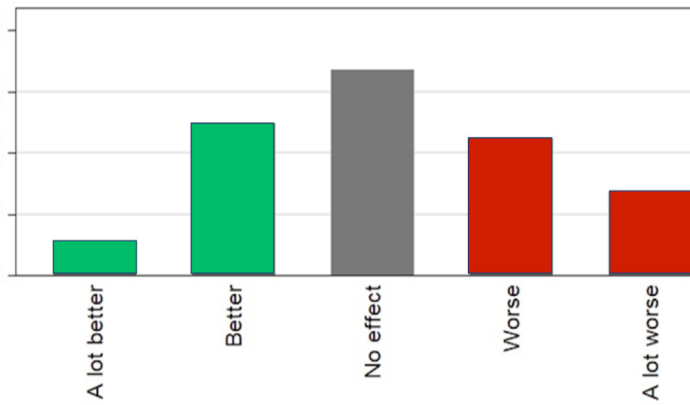The next big tech war front: RISC-V
Alibaba’s share price dropped nearly 10% on November 17 on the news it has canceled the spin-off and initial public offering (IPO) of its cloud computing division, marking the latest market tremor to hit China’s sanctioned tech industry.
Alibaba said the cancellation was driven by the disruption caused by US bans on China’s access to advanced proprietary semiconductors made by Arm, Intel, AMD and Nvidia.
At the same time, US sanctions are accelerating China’s development of advanced chips using the RISC-V open standard design architecture, giving rise to US Congress calls to extend the China tech bans to RISC-V.
RISC-V is an open standard instruction set architecture based on Reduced Instruction Set Computer design principles. It is a free, non-proprietary platform for the development of integrated circuit (IC) processors.
As an alternative to Arm, Intel, AMD and Nvidia, RISC-V is spurring the interest of not only China but also the EU and smaller companies and chip designers.
A China RISC-V Alliance was established in 2018 to create a complete open-source computing ecosystem by 2030.
The RISC concept was conceived at the University of California, Berkeley, in 2010. The RISC-V Foundation was established in 2015 to support and manage the open-source technology, with the Institute of Computing Technologies of the Chinese Academy of Sciences as one of its founders.
Other founding members include Google, Qualcomm, Western Digital, Hitachi and Samsung while other Chinese members include Huawei, ZTE, Tencent and Alibaba Cloud. The association currently has more than 300 corporate, academic and other institutional members around the world.
In 2020, the Foundation was incorporated in Switzerland as the RISC-V International Association, moving out of the United States to avoid potential disruption caused by then-president Donald Trump’s anti-China trade policies.
On October 31, 2023, Alibaba Cloud announced a RISC-V controller chip for enterprise solid state drives (SSDs) at its annual Aspara technology conference in Hangzhou, where the company is headquartered.

The device was developed by Alibaba’s wholly-owned IC design subsidiary T-Head. It will be used in Alibaba Cloud’s data centers for artificial intelligence (AI) training, big data analytics and other applications.
T-Head develops application-specific ICs for AI, cloud computing, industrial, financial, consumer electronics and other applications. It has also designed an internet of things (IoT) processor based on RISC-V.
Alibaba Cloud has announced the development of new data center servers with improved computational capabilities and energy efficiency. They should help it compete with Microsoft Azure, Amazon Web Services, Alphabet’s Google Cloud Platform and, in China, Tencent, Baidu and Huawei.
At the RISC-V Summit North America 2023 held in Santa Clara, California, on November 7 and 8, Alibaba’s director of AI-generated content (AIGC) David Chen presented what he claimed was the first successful deployment of a RISC-V server cluster in the cloud.
Cluster computing in cloud computing involves using multiple nodes or computers to form a single unit, enabling the system to handle heavier workloads than any computer could run.
Cluster computing can be used in various data-intensive applications ranging from machine learning to financial modeling to scientific simulations. First announced in October, the RISC-V cloud-based server cluster was achieved by T-Head and Sophgo in collaboration with Shandong University.
Sophgo is a developer of RISC-V processors and other open-source computing solutions headquartered in Beijing. The company has R&D centers in more than 10 Chinese cities targeting cloud computing, deep learning, data analytics, video, security, infrastructure and healthcare.
The RISC-V cloud server cluster utilizes processors designed by both T-Head and Sophgo and open-source Linux software. The Linux Foundation and the RISC-V Foundation have been collaborating since 2018.
“Each day, thousands of engineers around the world collaborate and contribute to advance RISC-V, the open-standard instruction set architecture that is defining the future of open computing,” the RISC-V organizers wrote in their introduction to the recent summit.
“The RISC-V community shares the technical investment and helps shape the architecture’s strategic future so everyone may create more rapidly, enjoy unprecedented design freedom, and substantially reduce the cost of innovation. Anyone, anywhere can benefit from these contributions,” the organizers said.
But not if US Congressman Mike Gallagher (R-Wisconsin) and his colleagues have their way.

On November 1, they sent a letter to US Commerce Secretary Gina Raimondo “to express our concerns about the national security risks posed by the People’s Republic of China’s (PRC) significant involvement in RISC-V and the organization’s semiconductor chip design architecture with the explicit purpose of undermining US export controls and leapfrogging our technological leadership in chip design.”
Gallagher is chairman of the Select Committee on the Strategic Competition Between the United States and the Chinese Communist Party. The letter was also signed by Raja Krishnamoorthi (D-Illinois), ranking member of the Committee, Senator Marco Rubio (R-Florida) and 15 other members of Congress.
Secretary of State Antony Blinken, Secretary of Defense Lloyd Austin and Secretary of Energy Jennifer Granholm were copied on the letter. The letter declared that “Urgent action is needed to prevent US technology and technical know-how from contributing to the PRC’s utilization of this technology.”
Not only is China seeking to use RISC-V to achieve technological self-sufficiency, it aspires to become an “open-source power” and already accounts for half of all RISC-V chips sold worldwide, the letter said.
This could happen because “RISC-V allows the PRC to use open-source architecture to develop advanced chips without needing a license from the US government.”
The letter recommends that all US individuals or companies engaging with China on RISC-V or any other computer instruction set architecture must receive US government licenses, even though RISC-V International is headquartered in Switzerland
The signatories compiled a list of questions for Secretary Raimondo, for which they would like answers by December 1, 2023. The questions include:
- What is the administration’s plan to prevent the PRC from achieving dominance in the RISC-V technology and leveraging that dominance at the expense of US national and economic security?
- What are the potential national security risks posed by the expanding use of RISC-V technology? How do existing US government policies related to the use of open-source technologies in sensitive systems address these risks?
- How is the administration working with US companies to address these potential security risks associated with these technologies?
- How could the administration apply the authorities provided by the Executive Order 14017 on Securing America’s Supply Chains to address the risks posed by RISC-V to cyber security and US industry?
- How would PRC dominance in RISC-V hardware affect the cybersecurity concerns related to internet of things and its application to critical infrastructure?
How the Biden administration responds will be a good indicator of how much, if at all, US-China tech tensions have eased since Biden and Chinese President Xi Jinping met in California at last week’s APEC summit.
The letter rightly points out that the intellectual property used to design ICs is currently dominated by Western companies such as Arm, Intel, AMD and Nvidia.
US-based RISC-V IP companies including SiFive, Andes, Qualcomm, Google and others have already been banned from selling their technology to Chinese companies on the Commerce Department’s Entity List without a license.
That, however, is not enough for Gallagher and his colleagues, who write that “the United States should build a robust ecosystem for open-source collaboration among the US and our allies while ensuring the PRC is unable to benefit from that work.”
To do that would require either competing with or expelling China from the RISC-V International organization. Some European politicians might agree with that, but the US politicians who signed the letter are either not aware of or have seemingly ignored the EU’s RISC-V policy.
In February, the European High Performance Computing Joint Undertaking (EuroHPC JU) announced plans to form a partnership with industry, research institutions, supercomputing centers and other organizations to develop a European high-performance computing (HPC) ecosystem based on RISC-V.
Its mission is to develop, deploy, extend and maintain world-leading supercomputing, quantum computing and related services and data infrastructure in Europe. This is to be supported by a secure supply chain with a wide range of applications contributing to the development of European science and industry.
The European Chips Act has identified RISC-V as one of the next-generation technologies in which Europe should invest to build and reinforce its capacity to innovate in the design, manufacturing and packaging of advanced, energy-efficient and secure integrated circuits, and turn them into marketable products ranging from micro-controllers to high-end chips used in data centers and supercomputers, the EuroHPC JU’s website says.

The technology should be linked to its use in industry in order to make sure that it addresses European market needs and “contributes to digital sovereignty beyond scientific HPC,” the website says.
“RISC-V technology is a credible energy-efficient alternative to the proprietary solutions for processors and accelerators across the computing continuum that are produced outside the EU.”
In other words, RISC-V is an alternative to Arm, Intel, AMD and Nvidia. Many US politicians view RISC-V as part of a new Cold War in the tech realm. The EU, like China, views it as a way to escape US dominance of advanced computing.
It remains to be seen whether the US will subvert open-source technology in what will likely amount to a futile attempt to protect and maintain its high-tech hegemony.
Follow this writer on Twitter: @ScottFo83517667





















